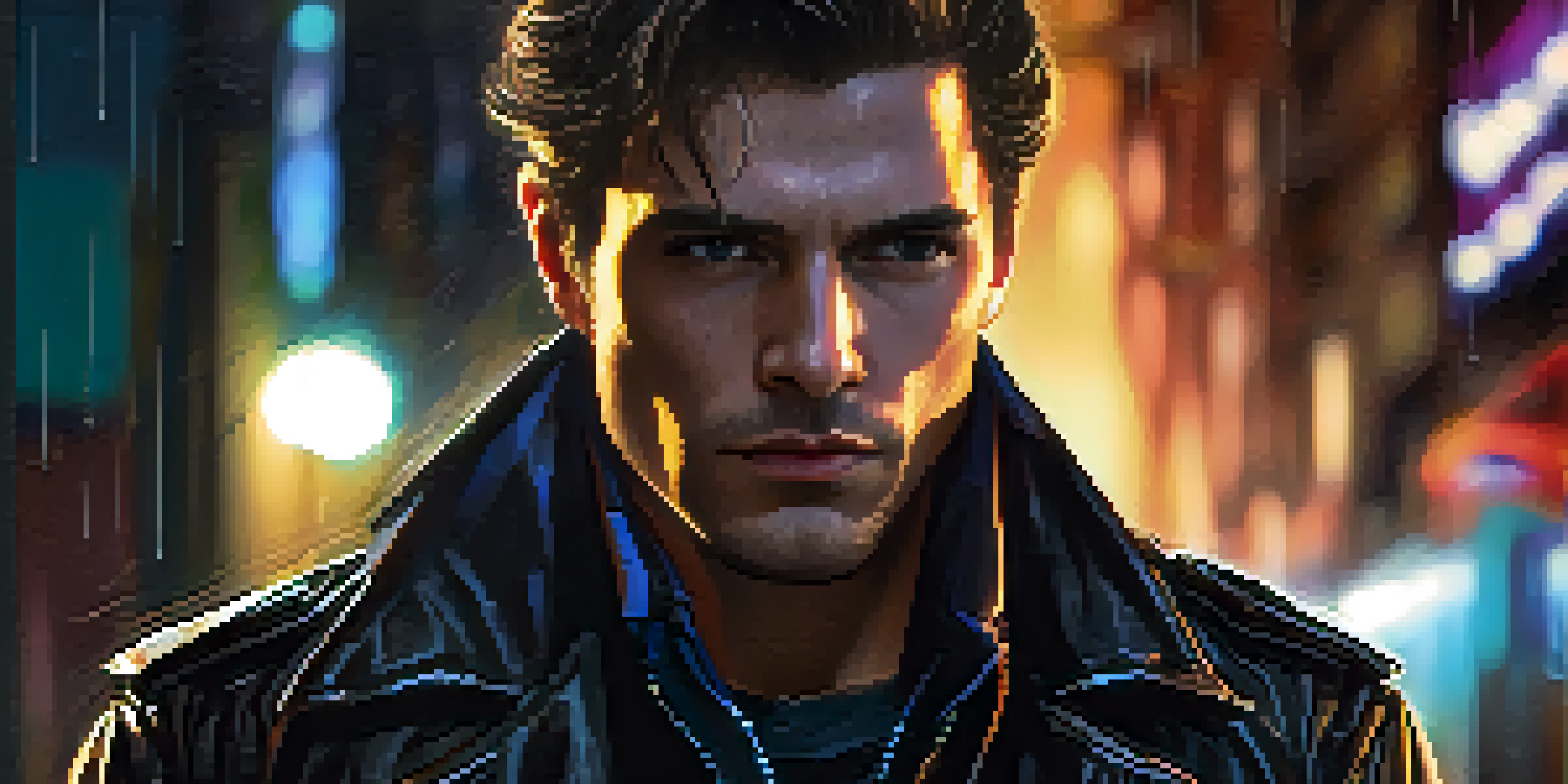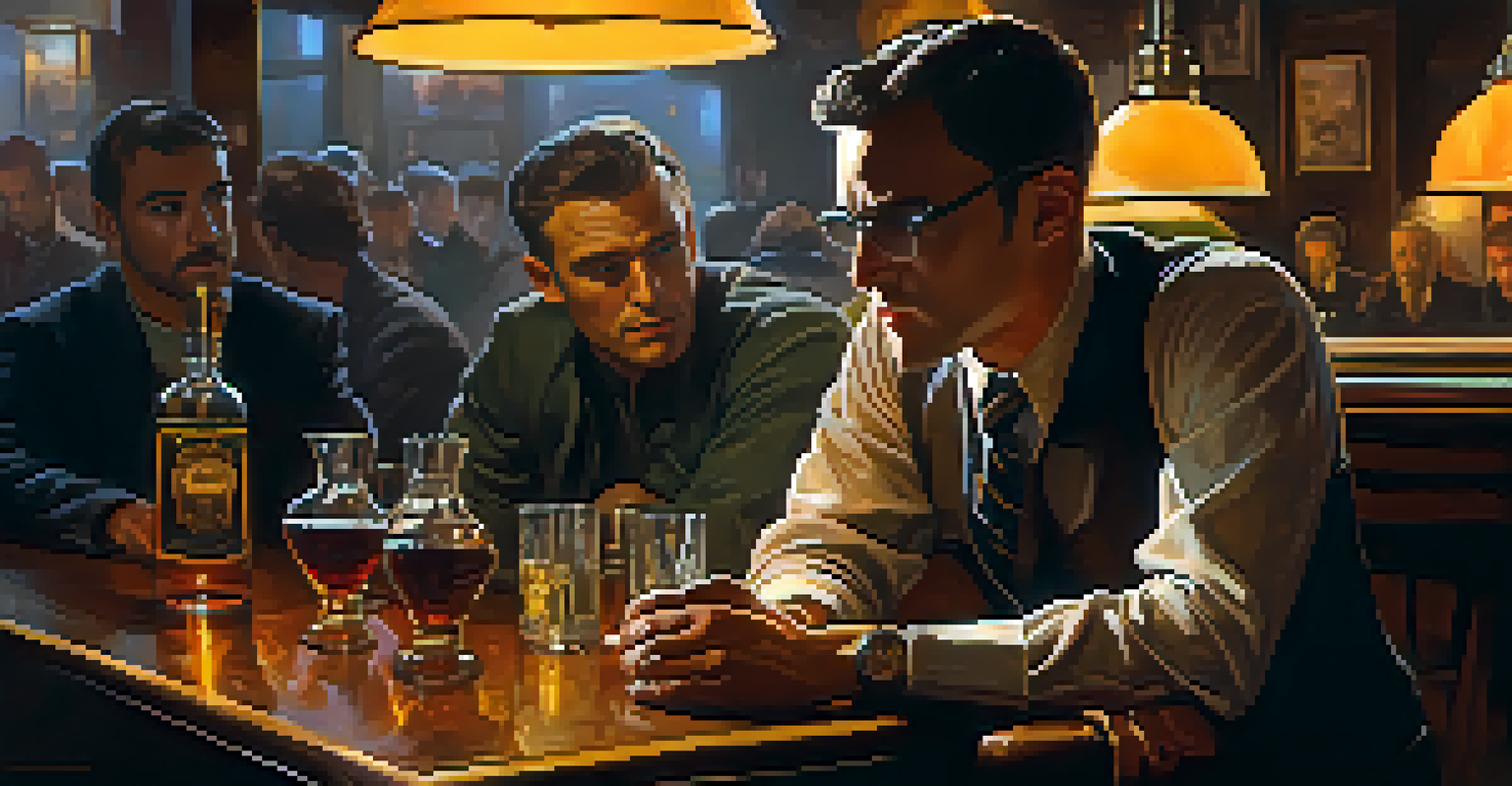The Impact of Antiheroes on Audience Engagement in Film

Understanding the Antihero: A New Kind of Protagonist
Antiheroes have revolutionized the protagonist role, challenging traditional norms. Unlike classic heroes, these characters often embody flaws, moral ambiguity, and complex motivations. This shift allows audiences to connect with them on a deeper, more relatable level, as they reflect the imperfections of real life.
The antihero is a character who is complex and layered, often reflecting the darker sides of humanity that we all grapple with.
Take Walter White from 'Breaking Bad,' for example. Initially, he appears as a sympathetic figure, a desperate man turned criminal to secure his family's future. Yet, as his journey unfolds, viewers grapple with their own feelings about morality and justification, drawing them further into his story.
This complexity invites viewers to question their values and beliefs, making the viewing experience more engaging. The antihero's appeal lies in their authenticity, prompting audiences to invest emotionally in their struggles and transformations.
The Emotional Connection: Relatability in Flawed Characters
One of the most compelling aspects of antiheroes is their relatability. Audiences often see their own struggles mirrored in these characters, creating a bond that traditional heroes might not achieve. This connection fosters empathy, encouraging viewers to root for characters despite their questionable choices.

Consider Tony Stark from the 'Iron Man' series. His brash personality and self-destructive tendencies resonate with many who face their own internal conflicts. As he evolves, viewers celebrate his triumphs and feel the weight of his failures, leading to an emotional rollercoaster that keeps them engaged.
Antiheroes Redefine Protagonists
Antiheroes challenge traditional hero norms by embodying flaws and moral ambiguity, allowing for deeper audience connection.
This relatability is crucial in today's fast-paced world, where viewers crave authenticity and depth in storytelling. By presenting flawed characters, filmmakers invite audiences to explore their own imperfections, forging a stronger emotional connection.
Moral Ambiguity: Challenging Traditional Narratives
Antiheroes thrive on moral ambiguity, often operating in gray areas that challenge viewers' perceptions of right and wrong. This complexity invites audiences to engage in discussions about ethics and morality, adding layers to the viewing experience. As characters navigate their choices, viewers are prompted to reconsider their own moral compass.
Flawed characters are the most interesting; they provide a mirror for our own imperfections and struggles.
For instance, in 'The Sopranos,' Tony Soprano is both a family man and a mob boss. His duality forces viewers to weigh the consequences of his actions, blurring the lines between heroism and villainy. As the story unfolds, audiences grapple with their feelings about loyalty, justice, and redemption.
This moral grayness enhances engagement, as viewers continuously reassess their stance on character motivations. The result is a richer narrative experience that stimulates thought and discussion long after the credits roll.
Cultural Reflection: Antiheroes as Mirrors of Society
Antiheroes often serve as reflections of societal issues, highlighting the struggles and complexities of modern life. By embodying traits that resonate with contemporary audiences, they become symbols of larger cultural narratives. This relevance not only captivates viewers but also sparks conversations about the world around us.
In films like 'Joker,' the antihero's descent into chaos mirrors societal neglect and mental health struggles. Audiences are drawn into a narrative that feels all too familiar, prompting them to confront uncomfortable realities. This connection enhances engagement, as viewers feel compelled to analyze the societal factors at play.
Emotional Connection Through Flaws
The relatability of antiheroes fosters empathy, encouraging viewers to engage with their internal struggles and complexities.
By tackling themes such as inequality, addiction, and identity, antiheroes create a dialogue that transcends the screen. This cultural commentary fosters a deeper connection with the audience, making the viewing experience both entertaining and thought-provoking.
The Role of Antiheroes in Modern Storytelling
In recent years, antiheroes have become a staple in modern storytelling, reshaping how narratives are crafted. Filmmakers are exploring themes of duality and complexity, allowing for richer character development and plotlines. This evolution reflects a shift in audience expectations, as viewers seek more nuanced storytelling.
Shows like 'Fargo' and 'Killing Eve' exemplify this trend, showcasing protagonists whose actions challenge traditional heroism. Viewers are drawn into intricate plots that keep them guessing, elevating the overall engagement. The unpredictability of antiheroes adds an element of suspense, making the viewing experience even more compelling.
As storytelling continues to evolve, the presence of antiheroes suggests a growing desire for authenticity and depth. By embracing complex characters, filmmakers can captivate audiences and inspire meaningful conversations around the narratives presented.
Viewer Engagement: The Psychology Behind Antihero Appeal
The psychological factors behind audience engagement with antiheroes are fascinating. Many viewers are drawn to the thrill of moral ambiguity, as it allows them to explore darker aspects of humanity without real-world consequences. This safe exploration can be both entertaining and enlightening, drawing audiences deeper into the narrative.
Research suggests that stories featuring antiheroes evoke a range of emotions, from empathy to frustration. These emotional highs and lows keep viewers invested, as they navigate the complexities of each character's journey. The psychological engagement turns mere watching into an immersive experience.
Cultural Reflection in Storytelling
Antiheroes reflect societal issues, prompting audiences to confront uncomfortable realities and sparking meaningful conversations.
Moreover, the unpredictability of antiheroes creates an element of surprise that keeps audiences on their toes. This tension adds to the excitement, ensuring that viewers remain engaged from start to finish, eager to see how each character's story unfolds.
Conclusion: The Lasting Impact of Antiheroes on Film Engagement
In conclusion, the rise of antiheroes has significantly impacted audience engagement in film, reshaping how stories are told and received. By blurring the lines between right and wrong, these characters invite viewers to reflect on their own values and beliefs. This connection fosters a deeper emotional investment in the narrative, making for a more compelling viewing experience.
As filmmakers continue to embrace these complex characters, the landscape of storytelling will likely evolve further. The discussions sparked by antiheroes encourage audiences to consider broader societal issues, promoting a culture of reflection and dialogue.

Ultimately, the enduring appeal of antiheroes lies in their ability to resonate with audiences on multiple levels. By engaging viewers emotionally and intellectually, they ensure their place in the hearts and minds of film lovers for years to come.